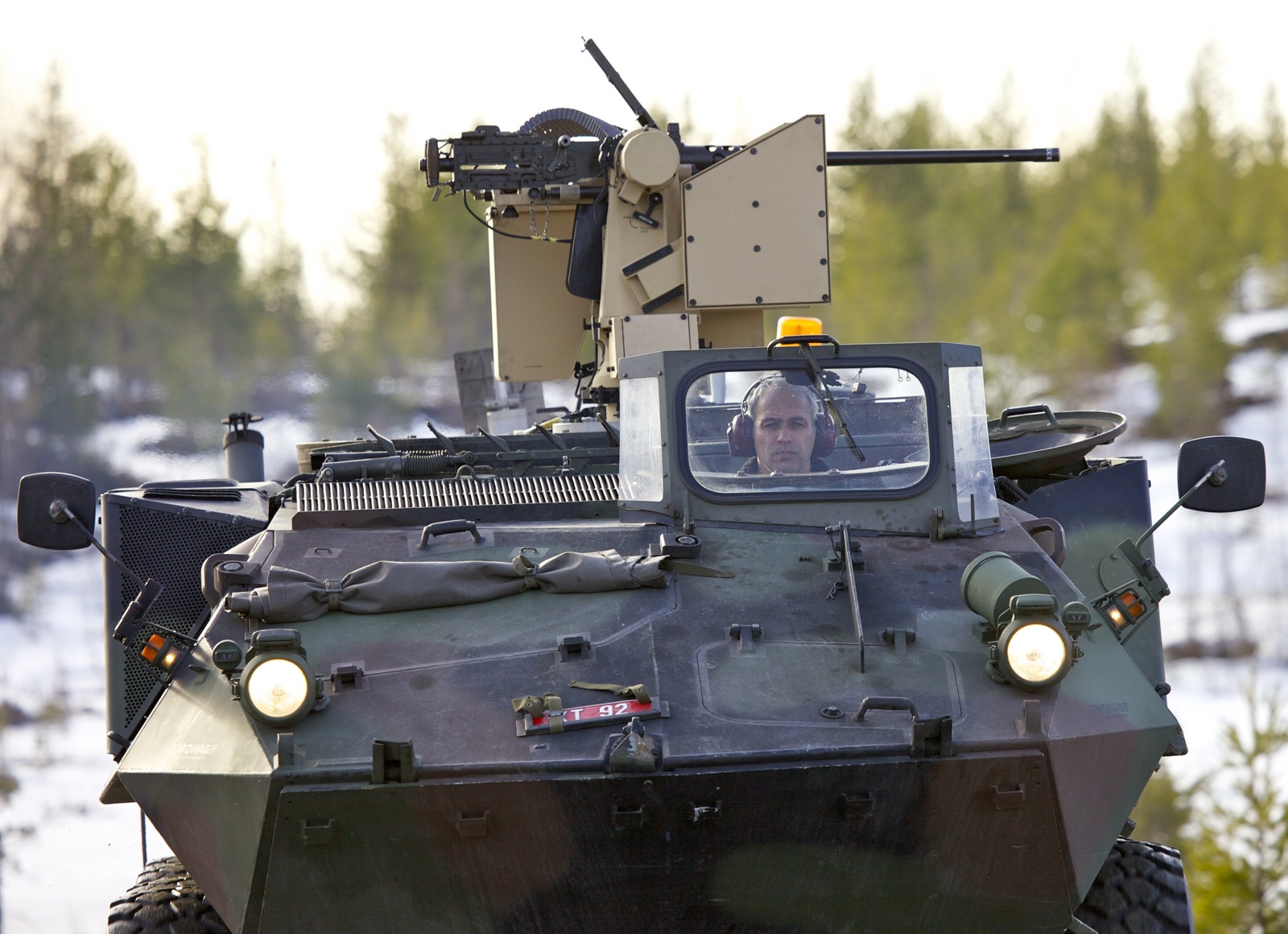
K-Magazine got to join the lads driving MOWAG Piranha and testing PROTECTOR at the Hengsvann firing range.
-
Text:OVE RONNY HARALDSEN
-
Ove Ronny HaraldsenGroup Communication Manager
A green-painted, angular vehicle with eight rough wheels rolls down towards the junction just outside Kongsberg Teknologipark. It is half past seven in the morning and Arne Tonby is at the wheel.
With his head sticking out of a roof hatch, he can see the car at the front of the line waving him politely out onto the road. Arne waves back to say thanks before manoeuvring eight tons of armoured steel out onto the main road and heading west towards Hengsvann firing range.
Heavy, armoured vehicles are a common sight in the morning rush hour around Kongsberg. And for the lads who work at the Test Execution & Workshop for Kongsberg Protech Systems, this is the start of a perfectly normal day at work.

FREEZING COLD
Behind the armoured vehicle are three of Arne Tonby’s colleagues in a lorry, along with a handful of engineers from Kongsberg and Kjeller. The goal for the day is to test the capacity of the PROTECTOR weapon control system to lock its sights on a moving target.
Firing range number 14 is their destination and the lads immediately get started setting up the target on a platform operated by wires. They spend some hundred days a year in action under the pine clad fields surrounding Hengsvann lake.
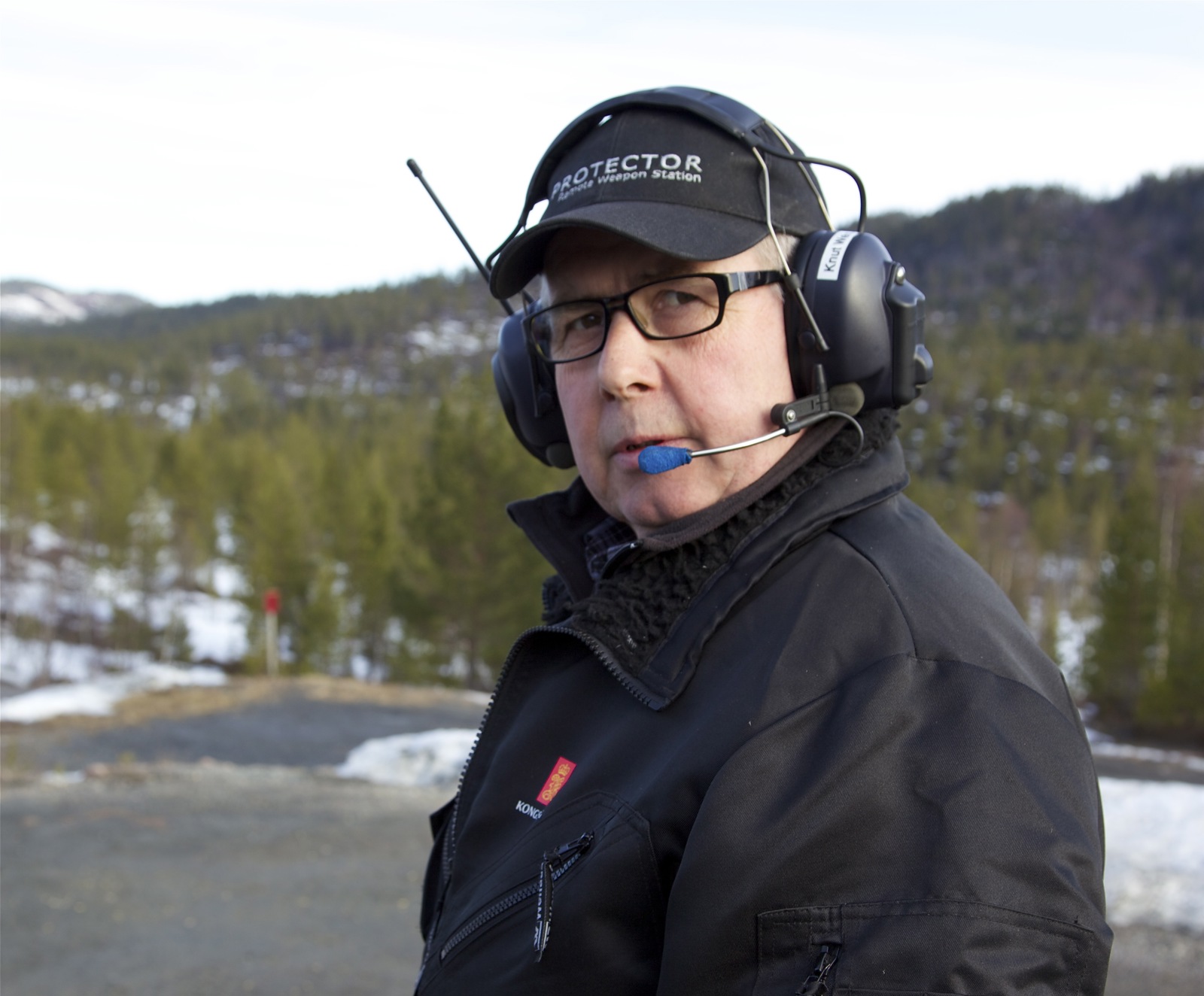
“I couldn’t imagine a better job,” states Knut Weirud. “Most people would probably love a job where you can spend so much time outdoors as well as some time indoors. I’m out there, where it’s happening. I get to move about and keep fit. It’s always best on days like this with good weather and plenty of sunshine. Other days can be incredibly cold, with minus 30 and strong winds. It’s not so much fun then. But that’s the job, and we have to put up with it.”
HEAVY FIRE
Once the target has been set up, gunman Michael Thomassen can crawl into the armoured vehicle and get settled behind his screen. This is connected to the weapon station on the roof, where Knut Weirud is busy lifting belts of cartridges into the ammunition box.
“Cock twice,” says Knut into the microphone on the hearing protectors with inbuilt VHF radio. He climbs back down into the vehicle and gives the driver the all clear to start driving.
The fourth man taking part is Ole Christian Gudmundsen. He is stationed outside and makes sure that the firing practice takes place safely.
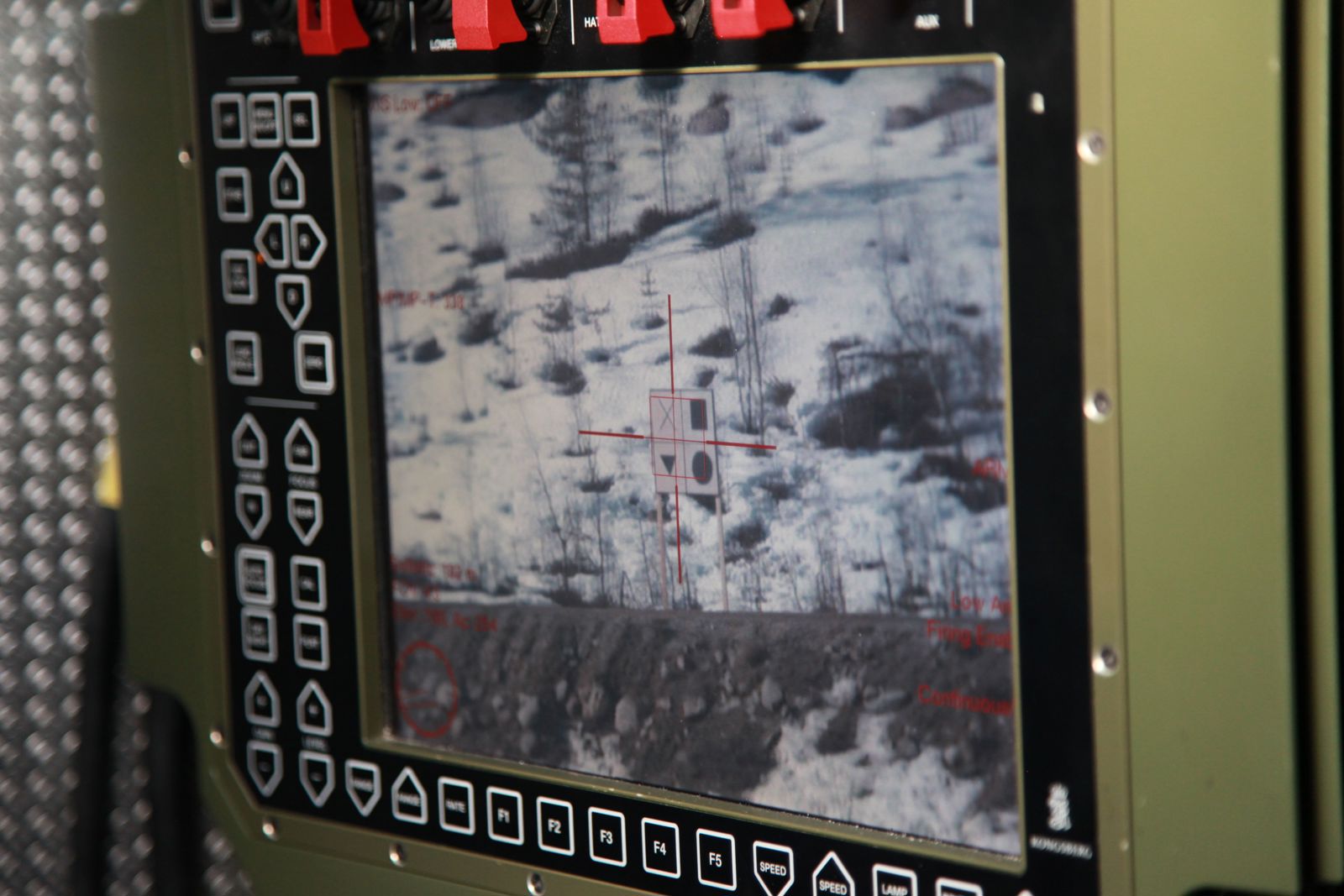
From a safe distance, we watch as the armoured vehicle picks up a good speed down the muddy gravel track. Moving parallel to the vehicle but in the opposite direction, at a distance of 200 metres, the target glides over a mound – perfectly unaware that Michael has just locked his sights on it and has a good grip of the joystick.
“Thirtieth shot coming,” he announces into the radio before triggering a volley of shots which perforate the target, and send up sprays of dirty snow behind the target in every direction.
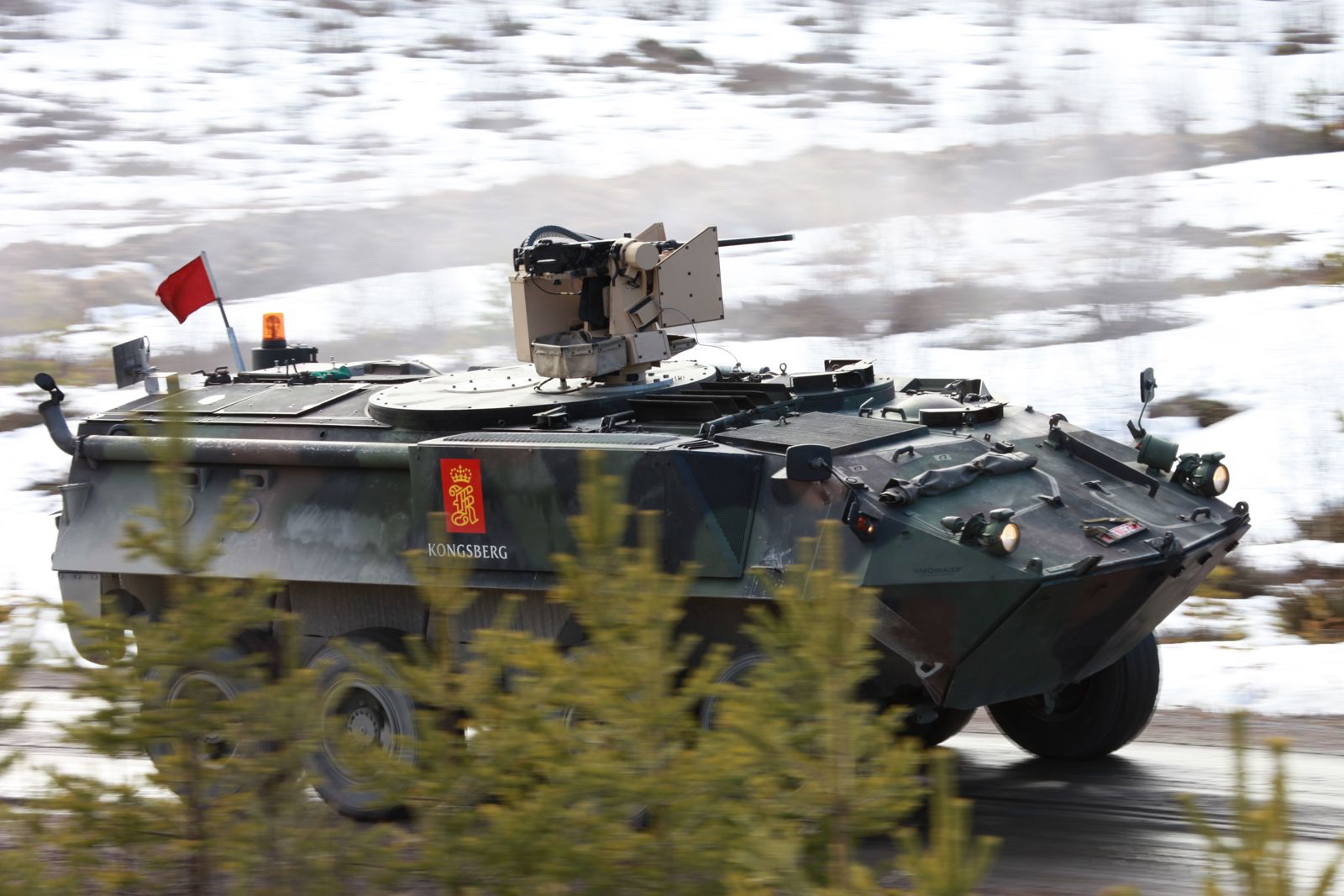
PRECISION
Michael Thomassen is a former officer with experience from Lebanon, Bosnia, Kosovo and Afghanistan. With first-hand knowledge of how the PROTECTOR weapon station functions, he is an invaluable resource for the engineers working on the system development.
“Weapon secured,” confirms Michael before turning round to the team of engineers who are monitoring a whole range of instruments.
If possible, I’d like to run that test one more time,” explains Michael.
After a short discussion, the engineers nod to each other and agree on a new round. For Michael, accuracy and giving precise feedback are all important.
“It’s my job to give any input I get to the engineers who have ordered the test."
“It’s my job to give any input I get to the engineers who have ordered the test. That’s why it’s so important to report anything I notice on the screen, and whether the test went according to plan or not.”
“Do you enjoy this kind of assignment?”
“My working day is very varied. I always enjoy working on the firing range, like today. In fact, I enjoy working with the weapon station even if we are not firing it, perhaps just testing a sensor. On other days, I may be in charge of the weapons or ammunition. We change functions frequently to avoid becoming too hung up on one specific task.”
A FUN DAY AT WORK
Arne Tonby lifts a barbecue out from the boot of the lorry, apparently a permanent fixture. Within minutes, some twenty sausages are sizzling on the barbecue while hungry men and one woman make their way to grab a bite.
As is the tradition in Norway, the sausages are served with hot-dog buns, potato cakes, crispy onions, ketchup and mustard.

“He always takes the first sausage,” the others laugh as Knut Weirud flips a hot sausage off the barbecue. “We always have a good laugh out on the firing range. When we have visitors, they always report that they had such a great time up here at Hengsvann. We have a great working environment but also do a good job, if we can believe our feedback,” explains Knut.
Today’s test leader, Katrine Mygland, can testament that the lads at Hengsvann make pleasant company. She has brought along her grandmother’s famous seed cake for dessert, which she slices on the lorry’s loading ramp.
“If I’m having a tough day in my office, I take a quick trip down to building number 51 U, where I can find this crowd and have a cup of coffee. They always put me back in a good mood,” she confirms with a smile.
PROFESSIONAL PRIDE IS IMPORTANT
After lunch, the testing continues. The weapon station is fired while moving, while stationary and moving in the opposite direction from the target. Around two o’clock in the afternoon, the test leader can happily report that all the tests have been successful.
"You have to be proud of your job, all the time"
“Today, everything we have done has gone right. The target seeker has improved and you can now fire with it. This is a great result, and I’m sure the engineers from Kjeller who wrote the software will agree,” confirms Katrine Mygland.
It’s Friday and the weekend is fast approaching. Katrine is up on the mound, helping Knut Weirud lift the target onto the back of the lorry. As Knut likes to say: “The job is not done until everything has been washed, cleaned and put back in place.” For Knut, accuracy, structure and order are essential.
“We have to be fully organised so that we know what we are doing at all times. This is incredibly important when you are working with weapons. We have to be absolutely certain that accidents cannot occur. If we are ever in doubt, we don’t fire our weapons.”
“You seem to take great pride in your job.”
“You have to be proud of your job, all the time. If I didn’t feel proud, I’d change jobs.”
“How do you define professional pride?”
“Having a job I enjoy and can say so to you and others. There are so many ways you can show that you enjoy your job and are happy with your employer,” continues Knut Weirud.
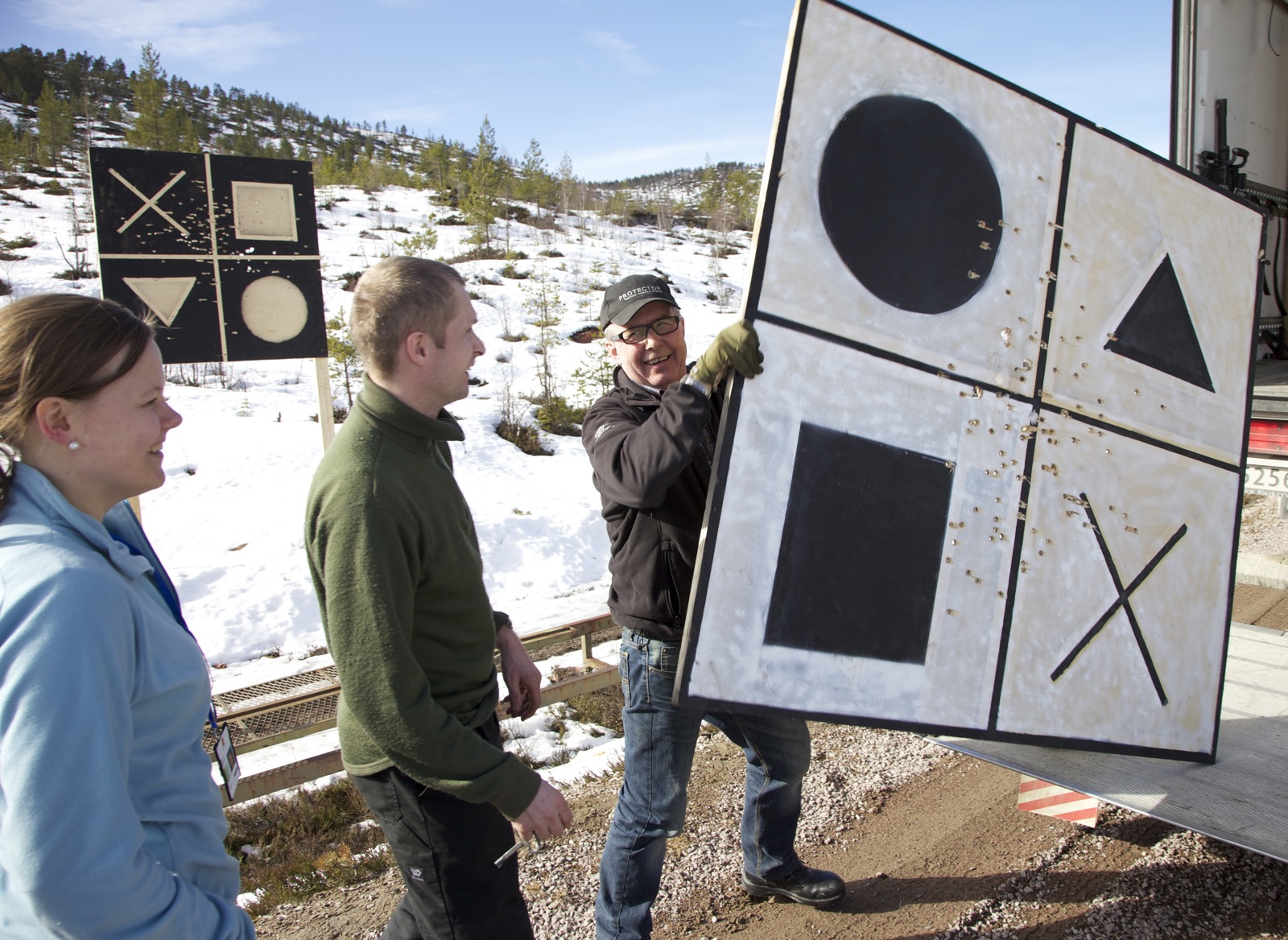
The exercise at Hengsvann firing range has come to its end. Knut and his colleagues pack away the last bits of equipment and head back to the main road and Kongsberg.
A good working day outdoors is now over, but for the lads from Test Execution & Workshop, they have many exciting days ahead of them, firing weapons, driving armoured vehicles and eating sausages outdoors.


